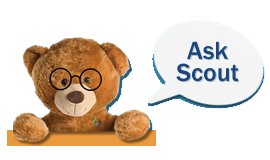.png?sfvrsn=db4f974d_0)
What is a Clinical Internship?
As a requirement to sit for the Child Life Certification Exam, students must complete a (minimum) 600 hour clinical internship in child life under the direct supervision of a Certified Child Life Specialist.
Internships are typically full-time, hands-on, and are required to meet the eligibility requirements for the child life certification exam. Internships are experience-based and are designed to teach and develop independent skills of child life practice. Individuals are expected, by the conclusion of the internship, to be able to function as job-ready, competent child life professionals.
Most internships are unpaid; however, there are a few child life programs that do offer paid internships.
.png?sfvrsn=434e974d_0)
Securing an Internship
Individuals must apply to specific internship programs to secure an internship. Internships are competitive and applicants are not always offered placements the first time they apply.
It is common for applicants to apply for more than one application cycle before receiving an offer. Asking for feedback, incorporating that feedback, and applying again are all typical parts of the professional development of future child life specialists.
Internship Readiness Common Application
The CLCC and ACLP recommends that programs utilize the Internship Readiness Common Application as well as common internship application deadlines in order to make the process as equitable as possible for prospective interns.
The CLCC and ACLP do not have control over the application requirements set for each internship program. It is up to the applicant to review specific application requirements for the programs they are apply to.
Internship Application Definitions
The following are common terms associated with the internship application deadlines.
6a93109d90156ede9dafff00004f030f.png?sfvrsn=5867e4c_0)
Internship Application Dates
If you are in the middle of completing your Eligibility Assessment and need assistance please reach out to certification@childlife.org for assistance.
The CLCC recommends common internship application deadlines in order make the process as equitable as possible for prospective interns. These are the important dates each internship cycle.
The Winter/Spring 2026 Initial Offer and Acceptance Dates have been updated to include those celebrating Jewish holidays during the original dates.
Offers on the Initial Offer Date will be made between the business hours of 1:00 pm and 5:00 pm Eastern Time. Offers will not be made to applicants prior to the Initial Offer Date.
Offer times by time zone:
-
Atlantic Time (2:00 p.m.–6:00 p.m.)
-
Eastern Time (1:00 p.m.–5:00 p.m.)
-
Central Time (12:00 p.m.–4:00 p.m.)
-
Mountain Time (11:00 a.m.–3:00 p.m., except Arizona)
-
Arizona Time (11:00 a.m.–3:00 p.m. or 10:00 a.m.–2:00 p.m., depending on time of year) AZ is in the Mountain Time zone and does not observe daylight savings time (except in the Navajo Indian Nation).
-
Pacific Time (10:00 a.m.–2:00 p.m.)
-
Alaska Time (9:00 a.m.–1:00 p.m.)
-
Hawaii-Aleutian Time (8:00 a.m.–12:00 p.m. or 7:00 a.m.–11:00 a.m., depending on time of year)
Offering Beyond the Initial Offer Date
All internship sites are welcome to make offers after the initial offer date as long as they have initially followed the application, offer, and acceptance deadlines.
This gives programs an opportunity to fill spots that would otherwise go vacant for a semester and provides more students with much sought after placements. Offers after the initial offer date may only be extended to candidates from the original pool and not from a new search.
.png?sfvrsn=3c7a974d_0)
Resources for Applicants
The following are resources related to internship for prospective applicants:
FAQs: Clinical Internship
The following are frequently asked questions related to a clinical internship experience.
-(700-x-250-px).png?sfvrsn=a6a624c_0&MaxWidth=300&MaxHeight=75&ScaleUp=false&Quality=High&Method=ResizeFitToAreaArguments&Signature=6985D43DDFF4B894CDCDB9D0420CC8A3A8F9B812)
